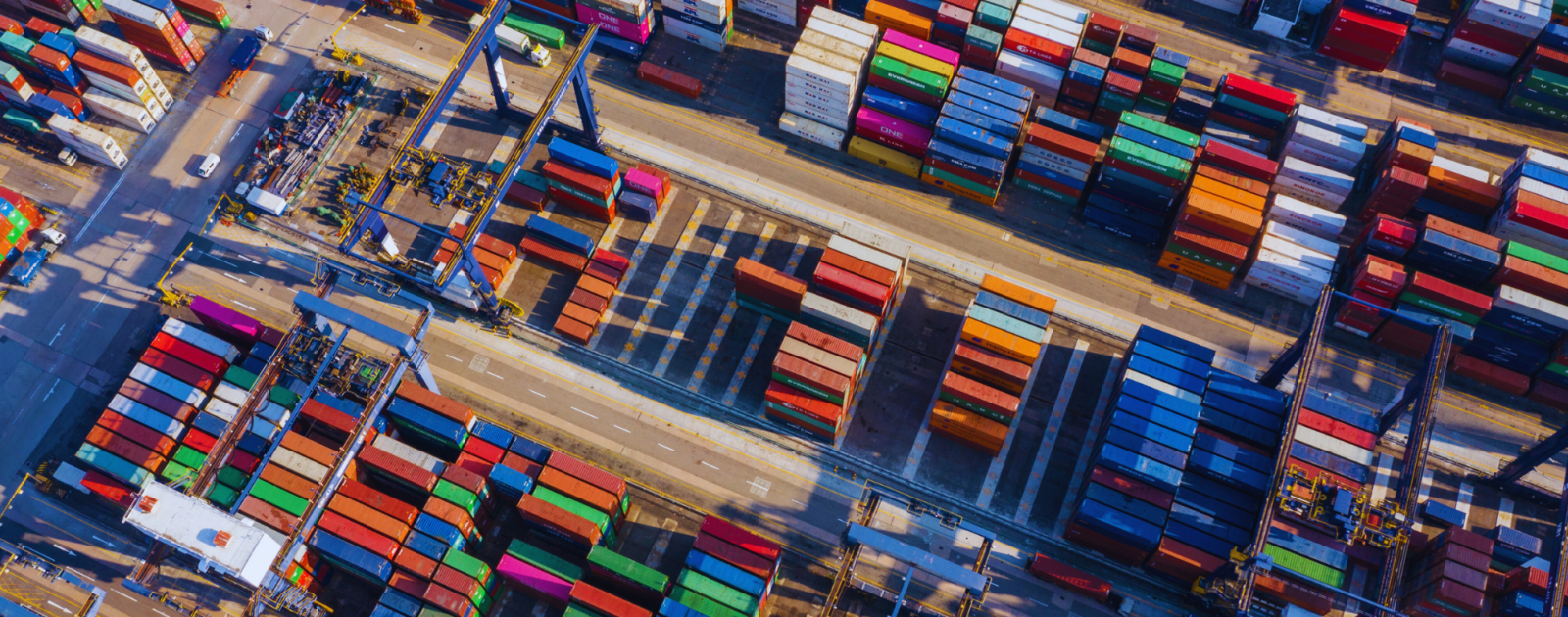According to PwC’s 2023 Survey on Digital Trends in Supply Chain, 51% of surveyed executives stated that cost optimization is the main priority for supply chain technology investments.
Supply chain trends – part 1: the spotlight on nearshoring

In a series of two blog posts, we will dive into the challenges faced by companies that try to adapt their supply chains and discuss the solutions (and companies offering these) that enable this. At Endeit Capital, we are excited about companies that enable the switch to modern supply chains and ‘Industry 4.0/5.0’. In this first post, we explore challenges and solutions surrounding the trend of nearshoring production.
Large, worldwide disruptions have tormented the world over the last few years. Companies had to face the fact that their supply chains were sensitive to these disruptions. Sensitive trading routes, (trade)wars, and unpredictable regimes have proven to be capable of disrupting supply chains fully and unsettling their business operations. Due to highly intertwined supply chain networks, this affected globally operating companies, as well as local businesses.
The sensitivity of supply chains generally originates from a few characteristics [1]:
- Supply chains are often highly fragmented, with many partners involved. This makes them hard to control.
- Supply chains fully depend on certain trading routes (e.g. Suez, Panama) and regions (e.g. China).
- Many supply chains are still characterized by significant amounts of manual labor and unautomated processes.
The awareness of this sensitivity has caused two important movements:
- Companies are looking to simplify and make their supply chains more robust/reliable and aim to nearshore/inshore their production. (part 1)
- Companies seek solutions that increase visibility into and control over their current supply chains. (part 2)
Nearshoring – enhanced efficiency
In order to avoid external circumstances disturbing supply chains and gain control over production lines, an increasing amount of companies opt for nearshore/inshore activities [2]. Nearshoring can also help companies achieve their ESG targets more easily, as less carbon is emitted during transportation, worker circumstances are often better, and environmental/social circumstances can be monitored and controlled more effectively [3]. However, these advantages generally go along with labor shortages and higher production costs in Western countries due to higher personnel costs and stricter legislation [4].
To enable profitable nearshoring, a cost-efficient production process is an absolute must. At Endeit Capital, we firmly believe (AI-driven) software that replaces manual work, centralizes control of supply chain processes, and optimizes these processes will be a critical enabler of successful nearshoring.
Robotics
The more industrial side of supply chains (e.g., manufacturing and warehousing) is especially heavy on manual/physical labor, in this space, robotics/self-operating machinery is on the rise. Companies like Advastore, Smart Robotics, Meshmerize, and Driveblocks develop software that enable cobots/robots/autonomous vehicles in ‘brown-’ and ‘greenfield’ layouts, which enhances their potential and makes them better applicable to varying environments.. Not only do such solutions phase out manual labor, but they also help reduce safety risks in (relatively) dangerous industrial environments [5].
Industry 4.0/5.0
To compete with overseas factories and to counter labour shortages, factories must be increasingly efficient. Excitingly, technologies that enhance factory efficiency are on the rise. We are referring to ‘Industry 4.0’, which implies the transition from manually operated factories to automated factories, where smart technologies are the new frontline workers. Especially in the space of manufacturing, we see a surge of AI solutions that optimize manufacturing processes. In the short to medium term, automation will augment existing machinery, increasing their efficiency. In the longer term fully automated factories are imaginable. Companies like RIIICO and Tomorrow Things use the Metaverse/virtual twins to replicate processes or factories so that they can be optimized in the cloud. As the names suggest, Deltia.ai, Ethon.ai, and Lynceus(.ai) leverage AI solutions to analyze and control manufacturing processes, which allows for effective optimization.
Furthermore, tech-heavy firms such as Kinexon and AFMG streamline manufacturing workflows. Factory automation/optimization does not only result in reduced labor, but also reduces costs via a.o. Energy optimization. For example, the Dutch company Sensorfact leverages IoT sensors to monitor the energy consumption and conditions surrounding industrial machinery in real-time.
Automated management
Moving more towards the white-collar areas of supply chain management, hence the management/administrative tasks, large efficiency gains can also be made. When considering the optimization of business processes related to supply chains, we see companies like Raft, Archlet, Actindo, SnowFoxAI, Partscloud that all reduce manual labor and increase efficiency by making previously time-consuming processes easier and quicker. Similarly, our portfolio companies, IPRally (enables advanced patent searches) and Cevinio (offers advanced invoice automation), leverage smart technology (AI/ML) to make time-consuming administrative matters quicker, easier, and better. Centralized, easy-to-use platforms from which all (or most) managing tasks surrounding supply chains can be orchestrated show large potential. This enables control and visibility over all supply chain stages. Data extraction with the use of AI enables companies to move away from handling matters over various programs (e.g., Excel, email, or even paper administration) and orchestrate their business via these insightful platforms, where all data is presented.
Inventory optimization
More direct cost-cutting solutions focus on reducing overstocking while ensuring that demands can be met. According to PwC’s 2023 Survey on Digital Trends in Supply Chain [6], 51% of surveyed executives stated that cost optimization is the main priority for supply chain technology investments. Enhancing the efficiency of current processes with recent technologies was the most appealing, in particular, rather than adopting new processes. Inventory/working capital costs can be reduced significantly using effective stock optimization solutions; according to a study from The Hacket Group [7], 64% of executives failed their objectives on the number of days inventories were at hand. Therefore, Inventory optimization solutions are essential to cutting costs by reducing overstocking while ensuring demands can be met. Companies in the space are Optiply, Stockly, Flowlity, and Madden Analytics. They all leverage AI models to forecast demands and/or help plan procurements, significantly reducing costs.
Our vision and conclusion
We believe the areas described in this post will drive modern (nearshored) supply chains and Industry 4.0/5.0 factories. Many of the technologies in this space are still in their infancy and have excellent growth potential. We are happy to assist founders with developing go-to-market strategies, reaching new customer groups, and expanding/accelerating their business.
Despite the exciting technological advancements increasingly enabling nearshoring, this is not a solution for every company. In our next post, we will dive into companies’ challenges with overseas suppliers and the technological solutions that help counter these challenges.
SOURCES
- [1] Forbes – ‘Exposing Supplier Vulnerabilities In The Supply Chain’, link.
- [2] McKinsey & Company – ‘How COVID-19 is reshaping supply chains’, link.
- [3] R. Conklen – ‘The role of ESG in reshoring manufacturing’, link.
- [4] Capterra – ‘As Nearshoring Takes Off, Here’s How SMBs Can Shorten Their Supply Chains’, link.
- [5] KPMG – ‘The future of supply chain,’ link.
- [6] PWC – ‘2023 Digital Trends in Supply Chain Survey’, link.
- [7] The Hackett Group & Coupa Webinar – ‘Supply Chain Outlook: Top priorities and Strategies for Overcoming Disruptions’, link.

